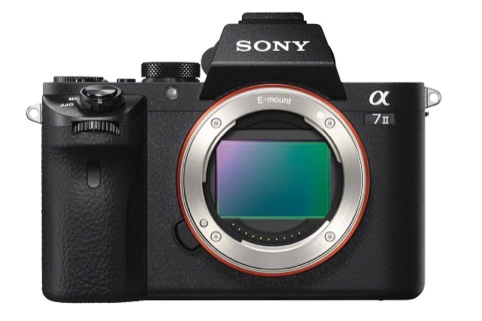
Sony has released the α7 II (ILCE-7M2), the next in the α7 series of interchangeable-lens models and what the company claims is the world’s first camera with optical 5-axis image stabilisation designed for a full-frame image sensor.
The camera boasts a BIONZ X image processing engine, designed to enhance images through ‘detail reproduction technology,’ which recreates natural-looking textures; ‘diffraction-reducing technology,’ which prevents loss of detail when aperture stopped down; and ‘area-specific noise reduction,’ which reduces noise while maintaining detail and texture even under low light conditions.
The camera is equipped with a full-frame Exmor CMOS image sensor with approximately 24.3 effective megapixels. High resolution and larger pixels enhance sensitivity and reduce image noise. Images are rendered beautifully, the company claims, and bokeh effects attainable only with full-frame sensors become possible.
A 24.3 effective megapixel 35mm full-frame Exmor CMOS sensor moves along five axes to compensate for camera shake, providing optical image stabilisation equivalent to up to 4.5 steps faster shutter speed of correction for still images. Optical five-axis image stabilisation is ideal for a variety of α lenses, and
handheld low-light shooting at slower shutter speeds becomes possible. The camera’s in-body image stabilisation is effective even in combination with E-mount lenses without Optical SteadyShot (OSS).
In addition to recording in AVCHD Ver. 2.0 Full HD (1920×1080) 60p (50p)/60i (50i)/24p, the camera records in XAVC-S, a consumer format derived from the professional XAVC format. This offers Full HD video quality at a bitrate of 50Mbps.
The new release has a quicker startup time, and once switched on, it is ready to shoot 40 per cent sooner than current models, the company says. It is also
Wi-Fi and NFC enabled for connectivity with mobile devices; and features support for PlayMemories Camera Apps.
The α7 II will be generally available in Europe from January 2015.






